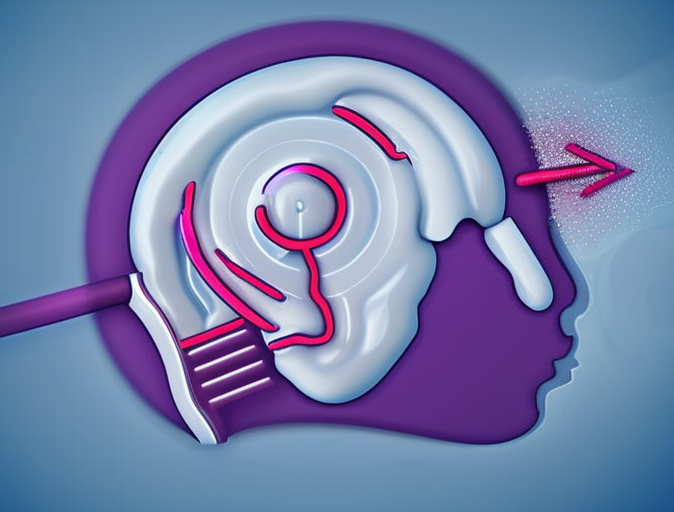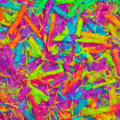Nicotine is a highly addictive substance found in tobacco products. When a person becomes dependent on nicotine and tries to quit or reduce their intake, they may experience a range of symptoms known as nicotine withdrawal. It is not considered life-threatening. Nevertheless, the psychological urges that it may trigger can be equally as powerful as those associated with other addictive substances.
Typically, the symptoms of nicotine withdrawal start appearing 1-3 hours after discontinuation, reach their maximum severity within 2-4 days, and persist for 2-6 weeks.
Symptoms
The symptoms of nicotine withdrawal can vary in severity and may include:
- Cravings: Intense cravings for nicotine are one of the most common symptoms of withdrawal. These cravings can be difficult to resist and may persist for several weeks or months.
- Mood changes: Nicotine withdrawal can cause irritability, anxiety, restlessness, and depression.
- Sleep disturbances: People experiencing nicotine withdrawal may have trouble falling asleep or staying asleep.
- Increased appetite: Nicotine is a natural appetite suppressant, so when a person quits smoking or using other nicotine products, they may experience an increase in appetite and food cravings.
- Fatigue: Many people feel tired and lethargic when quitting nicotine, which can make it difficult to focus or perform daily tasks.
- Headaches: Withdrawal from nicotine can also cause headaches or migraines.
- Constipation or digestive problems: Nicotine can stimulate the digestive system, so when a person quits, they may experience constipation or other digestive issues.
What can be done?
There are several actions, approaches, and methods that can help alleviate and combat the symptoms of nicotine withdrawal at home. Here are some suggestions:
Nicotine replacement therapy (NRT): Nicotine replacement products, such as gum, patches, or lozenges, can help reduce cravings and manage withdrawal symptoms. These products deliver a controlled dose of nicotine that is lower than what is found in tobacco products, helping to reduce dependence and cravings over time. It’s important to use NRT products as directed and speak with a healthcare provider about which product may be right for you.
Mind-body techniques: Relaxation techniques, such as deep breathing, meditation, and yoga, can help reduce stress, anxiety, and other mood-related symptoms of nicotine withdrawal. These techniques can also help improve sleep quality and reduce headaches.
Exercise: Regular exercise can help boost mood, reduce stress and anxiety, and improve sleep quality. Exercise also helps regulate the digestive system, which can help alleviate digestive symptoms.
Drink plenty of water: Staying hydrated can help reduce fatigue and headaches, and may also help reduce cravings.
Eat a healthy diet: Eating a healthy, balanced diet can help improve energy levels, regulate the digestive system, and help manage weight gain associated with nicotine withdrawal. Try to include plenty of fruits and vegetables, whole grains, lean proteins, and healthy fats.
Seek support: Quitting nicotine can be challenging, and it’s important to seek support from friends, family, or a healthcare professional. Support groups and quit lines are also available to provide encouragement and guidance.
Avoid triggers: Identify and avoid situations or people that trigger cravings for nicotine. This may include avoiding smoking areas or social events where others are smoking.
Medications and Supplements
If you feel that you need additional help to combat the symptoms of nicotine withdrawal, you can pay attention to some medications.
Here are a few practical examples that have demonstrated their efficacy. Nonetheless, I strongly encourage individuals to acquaint themselves with the medication instructions and consult their personal physician before usage.
- Wellbutrin is a medication that is commonly used as an antidepressant and to help people quit smoking. Its main mechanism of action involves acting as an antagonist on the nicotinic acetylcholine receptor, as well as being a noradrenaline-dopamine reuptake inhibitor (NDRI). By doing so, it can reduce the intensity of nicotine cravings and withdrawal symptoms.
- Chantix and Cytisine are prescription medications that work by partially agonizing the nicotinic receptors. By stimulating the nicotine receptors more weakly than nicotine itself, they reduce cravings and decrease the pleasurable effects of cigarettes and other nicotine products.
- N-acetylcysteine (NAC) has been shown to be effective in reducing cravings, particularly in individuals who struggle with compulsive redosing and psychological cravings.
It’s important to remember that nicotine withdrawal symptoms are temporary and will improve over time. Also, do not forget about the individual characteristics of our organisms and conditions. Everyone’s experience of quitting nicotine will be different. It may take several weeks or months on average to feel completely back to normal. With the right support and strategies, it is possible to successfully quit smoking or using other nicotine products.
✔️
This marks the finish of today’s session. It is my hope that this piece was enlightening.
If you desire to advance the growth of this blog, I suggest the following actions:
- Follow my social media accounts (Twitter, Reddit).
- Circulate a link to this article among your associates.
- Give recognition to this blog on relevant platforms or discussion groups.
Should you identify any necessary additions or corrections in this article, feel free to initiate a dialogue with me via Telegram. I am always open to communication.
I express my gratitude for your valuable time and consideration 🪟




